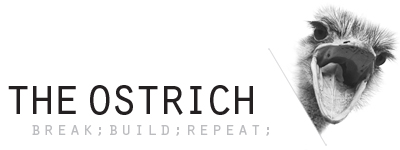
Whether you want to start your own WordPress-powered site, or you’re a WordPress developer – a local WordPress installation is a useful tool. Luckily, with the Bitnami WordPress stack, it’s also a breeze to set up!
WordPress, as a PHP-based web application, requires a full-blown web stack to run. At the very least, you’ll need a PHP-enabled web server, and a database engine. An often-used combination is the LAMP stack, which stands for Linux, Apache, MySQL & PHP.
Setting up a full stack on your own is definitely possible. For most, it’s not considered a fun way to spend an afternoon (or a weekend, if things get hairy). Got several computers with different OSes? Expect a completely different experience with each one…
Enter Bitnami. In a nutshell, Bitnami provides pre-configured, self-contained, application stacks for many popular web applications. And they do it for Windows, Linux, and OS X! Want to install a local WordPress stack? Simply download the installer for your platform, run it, and rejoice!
This short how-to post demonstrates installing a WordPress Bitnami stack on OS X.
The Bitnami WordPress installer
Bitnami offers a WordPress stack. They have virtual machines, and cloud-based plans, but here I focus on the installer.
Just point your favorite browser to the WordPress stack installer page, and choose the package for your OS.
As the title suggests, this time I focus on OS X. I also have a Windows laptop, but these days I spend most of my time on my MacBook Pro.
- Downloading the Bitnami WordPress stack installer for OS X
Run the downloaded installer:
- Running the installer
- Choosing installation language
- Selecting components to install
- Creating WordPress admin account during installation
- Setting blog name
- Optional email configuration
Work through the installation wizard, customizing the installation to your needs. A few wizard screens shown above.
Behold! A simple next-next-next wizard eliminated all the hassle from setting up a full-blown LAMP setup with WordPress configured and ready to use!
- Completing the installation wizard
- Accessing the Bitnami stack web interface on localhost
- Ready to use local WordPress site
The web server is configured to listen on port 8080 by default. WordPress is configured to be served on base URI /wordpress by default. Usually, the defaults are fine.
But you’re not expected to remember even that! Bitnami stacks come with a little manager application:
- Bitnami stack manager for OS X
Through this application, you can configure the servers, if you’d like.
- Configuring the Apache Web Server port
For extra bonus points, Bitnami stacks are completely self-contained. This means that you can backup your entire local setup by backing up the application directory. No need to worry about disparate locations for database files etc.. Everything is there. In addition, it allows multiple Bitnami stacks to co-exist peacefully. You’ll just need to configure each stack to use different ports, so they don’t step on each others toes. In fact, the installation I demonstrated in this post is my third Bitnami stack on the same machine. It Just Works.
Summary
That’s all there is to it. Getting from zero to a working local WordPress stack with Bitnami is that simple.



















Leave a Reply